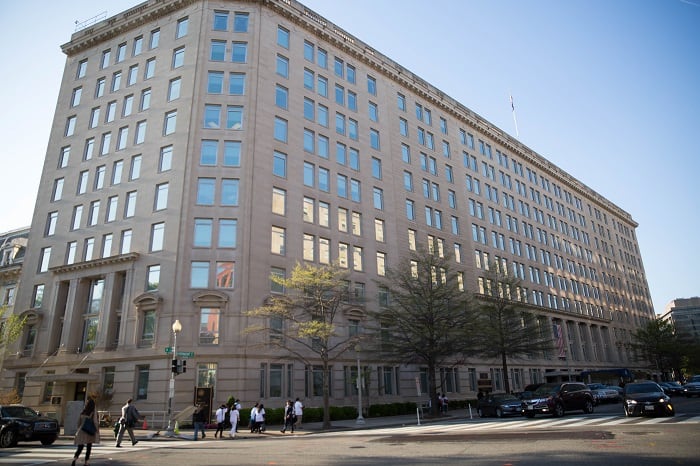More ships and predictable budgets are top priorities for two leading lawmakers assigned to the chair the House and Senate seapower subcommittees that oversee the Navy and Marine Corps.
But meeting those goals will be anything but easy. The Navy can't afford its current plan for 306 ships, and future budgets will have facespending caps that could hamper the Navy's building plan.
Rep. Randy Forbes, R-Va., has taken the helm of the House Armed Services Committee's Seapower and Projection Forces Subcommittee, which will address these and other issues. He favors a 350-ship Navy, and said in an interview that "there is absolutely no way" theat Navy can meet its goal of 306 ships with its current shipbuilding budget.
"Over the last six years, [the Obama administration] has allowed our budgets to drive our strategies instead of allowing our strategies to drive our budget, and that's just got toa change," said Forbes in a Jan. 20 phone interview, who one of two influential lawmakers to talked to Navy Times on Jan. 20, after the new Congress convened in January. "Unless we get that right, the Navy will never be able to fully doto the things it needs to do."
The Congressional Budget Office affirmed the shipbuilding shortfall in December. The Navy's plan is to buy 264 ships over the next 30 years: 218 combat ships and 46 logistics and support ships. The plan would cost $21 billion annually, according to CBO. That is roughly one-third more shipbuilding money than the Navy has received in recent decades, and there is no plan to make up the difference, CBO reported. In fiscal 2016, the Navy is requesting $16.6 billion for shipbuilding. Service leaders cannot simply shift existing funds to cover the cost because the bulk of the Navy budget is tied up in readiness and compensation costs.
Service leaders now look to put six destroyers into destroyers in reduced status, or lay-up, and buy eight fewer ships — to include three fewer destroyers and one fewer attack submarine — between 2015 and 2019, according to the CBO report. The service already plans to put 11 cruisers into lay-up, although no more than six would be in that status at any one time.
Forbes said the answer is to instead shift 1.5 to 2 percent of the defense budget to fund the current shipbuilding plan. But that move would require buy-in from a variety of lawmakers, including those who represent states and districts with Army and Air Force installations. That's where Forbes' sales pitch comes in: 85 percent of goods travel by sea, and 95 percent of those travel through nine critical nine choke points around the world. How critical? The Central Intelligence Agency has estimated the price of that gas would skyrocket to $7.50 per gallon if the Straits of Hormuz was were blocked for just two weeks, to cite just one as an example.
"As you look out on the horizon, I think it is very clear that the next decade, maybe two or three decades, is going to belong to the navies of the world," Forbes said. "As the Navy goes, so goes our national defense."
Bryan Clark, a defense analyst at the Center for Strategic and Budgetary Assessments, argues the Navy's shipbuilding coffers are best used beefing up the littoral combat ship and buying more attack submarines. Clark believes the joint high-speed vessels and afloat forward staging bases can bolster the amphibious missions of the gator Navy. But submarines are critical in a navy on navy fight.
He won't have a hard time convincing Forbes.
"In eight years, the Chinese will have north of 80 submarines in the Asian-Pacific area, and we will have in the low 30s," Forbes said. "That's not the world that we necessarily want to be in."
Building ships
Sen. Roger Wicker, R-Miss., the new chairman of the Senate Armed Services Committee's Seapower Subcommittee, is equally concerned about the size of the fleet and its force projection.
"Our sea services are integral to projecting U.S. power around the world," he said. "And yet, amid diverse and complex threats, our Navy is currently the smallest it has been since World War I. Our amphibious fleet — at 29 vessels — falls far short of the Marine Corps requirement of 38 ships."
The shipbuilding plan calls for buying 21 amphibious ships through 2044, but this would only increase the gator Navy from 31 to 33 ships, since most of the current fleet is at or near retirement.
It is worth noting that half of the Virginia-class subs are built a stone's throw from Forbes' home in Virginia's 4th Congressional District Fourth District, while Huntington Ingalls Industries is the biggest employer in Wicker's state, and has billions in amphib contracts. Both lawmakers are adamant that they will push for acquisition reform.
Wicker is calling for called for stable and predictable budgets and said Congress and the president must the need to address sequestration "in a responsible way." The latter "is critical to ensuring our military and our shipbuilding industrial base have the ability to react to unforeseen contingencies," he said in a Jan. 29 phone interview.
Wicker, who has been a member of the Senate senator since 2007, also has wasteful spending in his sights. First-of-class ships — like the aircraft carrier Gerald R. Ford — have historically overrun budgets, in part because of the complexities of new technologies and design. He hopes looks to drive realistic acquisition budgets and encourage better communication between industry and the Navy in regard to requirements and expectations.
Wicker has a working relationship with Navy Secretary Ray Mabus that dates to 1988, when Wicker was a Mississippi state senator and Mabus was governor of the state.





